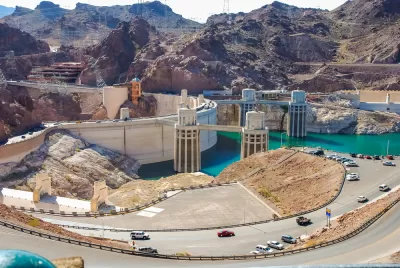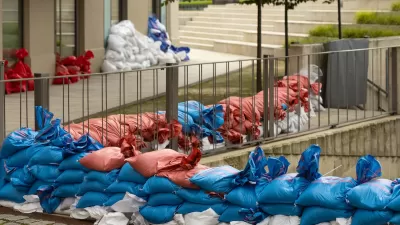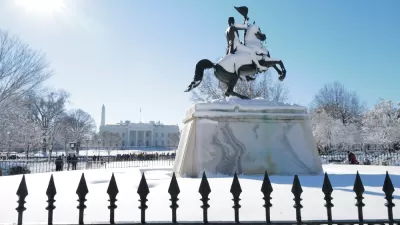In celebration of Water Week in the United States, as well as World Water Day, as celebrated by the United Nations, Brookings has complied a list of ten facts about water policy and infrastructure.

"From the water safety crisis in Flint, Michigan to the near-disaster with the Oroville Dam in California, a string of water-related events have made headlines, and called into question the U.S. focus on keeping critical water systems safe and functioning," according to a post by Alison Burke. So it's fortuitous timing that Water Week has arrived in the United States, and that today is the United Nation's World Water Day.
The post collects the Brookings team's research on the matters of water, so the article opens the floodgates, so to speak, to a lot more reading. Here are the ten facts as listed, with the relevant studies, research, and details available after the jump:
- Water plays a critical role in the economy.
- The federal government only accounts for a small share of total public spending on water infrastructure.
- Geographic and political boundaries can pose challenges to water investment
- The cost of water is on the rise in many cities.
- There's a mismatch between water investment demand and institutional capacity.
- Only a handful of drinking water utilities in the largest cities nationally rank highly in water investment
- The private sector owns most of the nation's dams.
- 69 percent of the nation's dams were built before 1970.
- Climate change and water cycles are closely linked.
- Despite concerns over water safety and infrastructure, Americans have greater access to clean water than most people around the globe.
FULL STORY: 10 facts about water policy and infrastructure in the US

Study: Maui’s Plan to Convert Vacation Rentals to Long-Term Housing Could Cause Nearly $1 Billion Economic Loss
The plan would reduce visitor accommodation by 25,% resulting in 1,900 jobs lost.

North Texas Transit Leaders Tout Benefits of TOD for Growing Region
At a summit focused on transit-oriented development, policymakers discussed how North Texas’ expanded light rail system can serve as a tool for economic growth.

Using Old Oil and Gas Wells for Green Energy Storage
Penn State researchers have found that repurposing abandoned oil and gas wells for geothermal-assisted compressed-air energy storage can boost efficiency, reduce environmental risks, and support clean energy and job transitions.

Private Donations Propel Early Restoration of Palisades Playground
Los Angeles has secured over $1.3 million in private funding to restore the Pacific Palisades playground months ahead of schedule, creating a modern, accessible space that supports community healing after recent wildfires.

From Blight to Benefit: Early Results From California’s Equitable Cleanup Program
The Equitable Community Revitalization Grant (ECRG) program is reshaping brownfield redevelopment by prioritizing projects in low-income and environmental justice communities, emphasizing equity, transparency, and community benefits.

Planting Relief: Tackling Las Vegas Heat One Tree at a Time
Nevada Plants, a Las Vegas-based nonprofit, is combating the city’s extreme urban heat by giving away trees to residents in underserved neighborhoods, promoting shade, sustainability, and community health.
Urban Design for Planners 1: Software Tools
This six-course series explores essential urban design concepts using open source software and equips planners with the tools they need to participate fully in the urban design process.
Planning for Universal Design
Learn the tools for implementing Universal Design in planning regulations.
Ascent Environmental
Borough of Carlisle
Institute for Housing and Urban Development Studies (IHS)
City of Grandview
Harvard GSD Executive Education
Toledo-Lucas County Plan Commissions
Salt Lake City
NYU Wagner Graduate School of Public Service





























